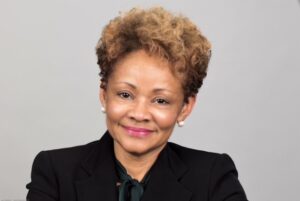allies
Select an item by clicking its checkbox
Like many of you, perhaps, I’ve been involved in a lot of race-related conversations at my institution lately. These conversations are usually among folks who I might, if pressed, call “allies,” “accomplices,” or even “co-conspirators”—well-intentioned, social justice advocates who are wanting to make real change at our institution, ...
In a webinar on “white allies” moderated by Dr. Lynne Westfield, her guests Drs. Melanie Harris and Jennifer Garvey discussed their collective anti-racism work. Dr. Harris stated that she feels called to work with white colleagues around anti-racism, but that white colleagues must do some preparatory anti-racism work before engaging ...

On Being Included: Racism and Diversity in Institutional Life
Date Reviewed: August 9, 2016
In a valuable and demanding text, Sara Ahmed’s On Being Included looks at the role of diversity in higher education institutions in order to examine the many difficulties and paradoxes that diversity practitioners face. Most centrally, Ahmed argues that the people who work in diversity offices are expected to fix the “blockages” that come with various racial, ethnic, gender, and sexuality tensions, yet these same persons are themselves viewed as the blockage when they raise such issues. Similarly, many institutions use the existence of a diversity office as sufficient evidence of the school’s health rather than as a locus for productive work.
The book’s argument relies on a series of interviews that Ahmed did with diversity practitioners at schools in the United Kingdom and Australia. The results she obtained are shaped largely by a series of acts passed in the UK, beginning with 2000’s Race Relations Amendment Act (RRAA) and concluding with 2010’s Equality Act. These acts led to the creation and assessment of diversity statements by UK colleges and universities. Over the course of five main chapters, she examines the experiences of her informants and analyzes their logic and rhetoric to disclose how institutional diversity work often functions to salve privileged consciences while concealing marginalized voices.
In particular, Ahmed spends significant time looking at the policy documents that diversity offices were often tasked with developing. Because of the RRAA, many of the documents she examined were written in terms of legal compliance, and thus target safeguarding the school’s image more than improving its institutional life and structures. Moreover, she notes that after the policies created by various UK schools were evaluated and ranked, high marks on a well-written statement were translated into institutional strength at diversity work, which ultimately concealed the type of work that still needed to be done. Indeed, the text claims that an explicit, stated commitment to diversity by a school usually has no effect on the actual practices and habits of the school. Not only do policy commitments fail to lead to action, they often substitute for action.
This leads to one of the concluding provocations of the text, where Ahmed pushes against the discourse around diversity “allies.” She notes that a focus on white anti-racism can often have the effect of simply re-centering whiteness. Diversity work is often supported by white persons or by predominantly white institutions precisely as a way of assuaging a bad conscience. Ahmed sees this as most evident when progressive whites react to challenges about race first by invoking their own bonafides rather than affirming the experiences of the marginalized.
On Being Included is an insightful, challenging, and well-written text. Teachers and administrators who are interested in diversity should certainly take time with Ahmed’s work, as should anyone interested in assessing the larger role of institutional context in higher education. Although a careful reading will not leave the reader with any easy approaches or techniques, it will undoubtedly prompt helpful critical self-reflection that universities need.

